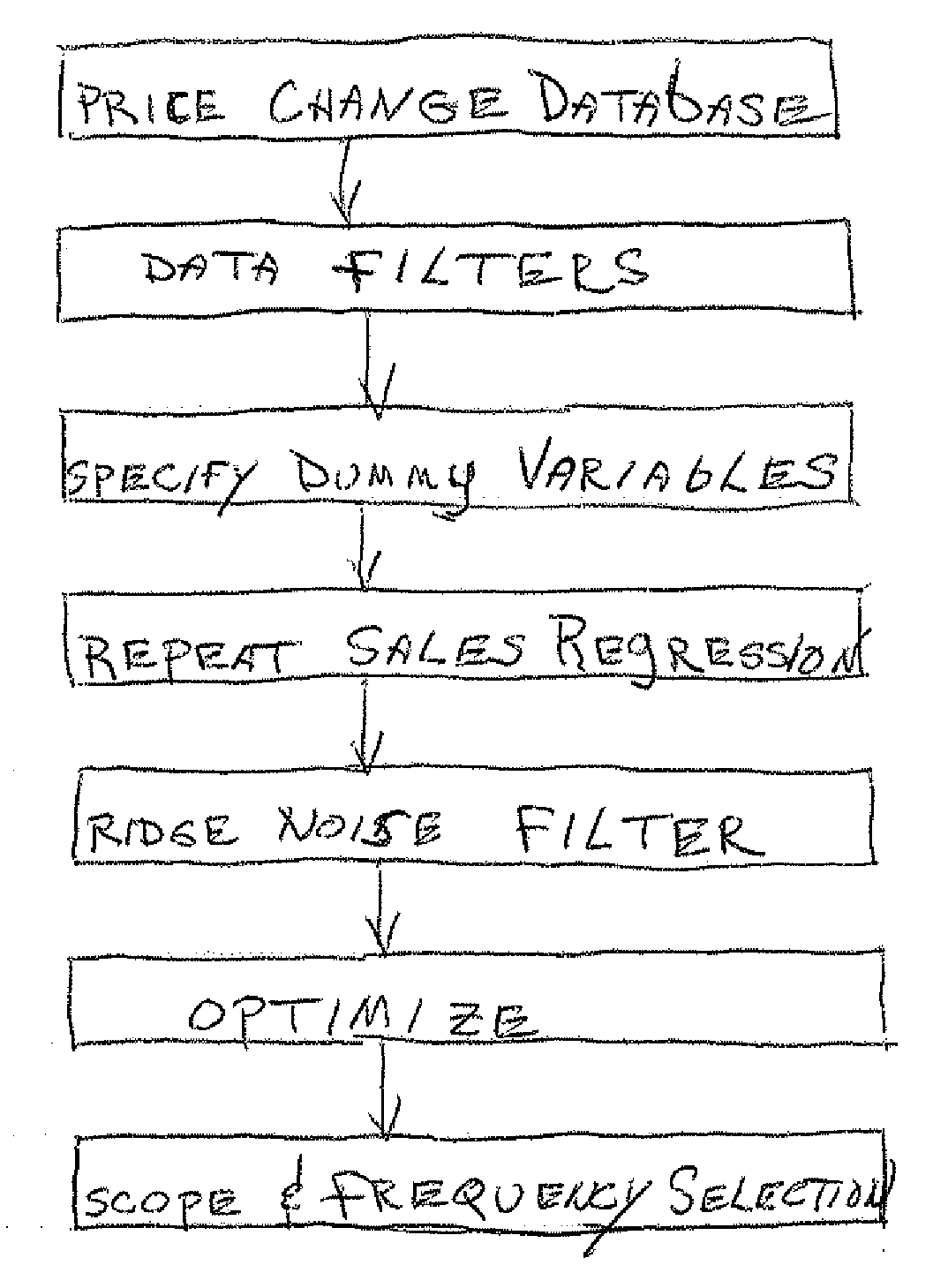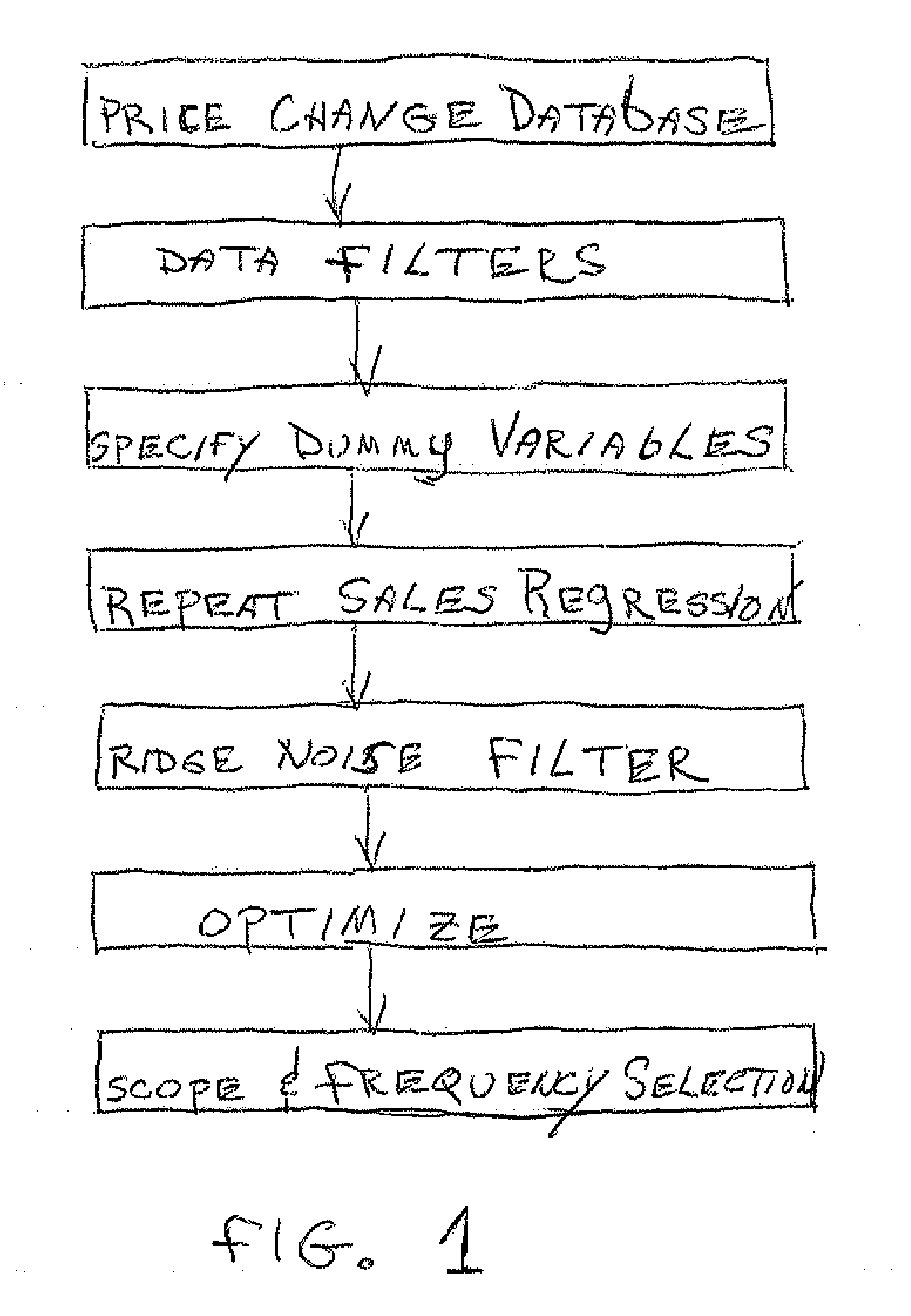Method for establishing a commercial real estate price change index supporting tradable derivatives
a technology of tradable derivatives and indexes, applied in the field of establishing a commercial real estate price change index supporting tradable derivatives, can solve the problems of high transaction costs, lack of liquidity, and inability to sell “short”
- Summary
- Abstract
- Description
- Claims
- Application Information
AI Technical Summary
Benefits of technology
Problems solved by technology
Method used
Image
Examples
Embodiment Construction
[0034]First of all, the inventors will describe and explain the details of the price-change index construction methodology according to the invention. We will begin with a simple description and numerical example of the basic repeat-sales regression (RSR) technique that underlies the indexes. We will then describe some enhancements to this technique to improve the index's precision. Data filters that are employed will also be described.
[0035]To understand how the RSR index construction process works, you must step back briefly and recall some basic statistics. You may recall that regression analysis is a statistical technique for estimating the relationship between variables of interest. In a regression model, a particular variable of interest, referred to as the dependent variable, is related to one or more other variables referred to as explanatory variables. The regression model is presented as an equation, with the dependent variable on the left-hand-side of the equals sign, and...
PUM
 Login to View More
Login to View More Abstract
Description
Claims
Application Information
 Login to View More
Login to View More - R&D
- Intellectual Property
- Life Sciences
- Materials
- Tech Scout
- Unparalleled Data Quality
- Higher Quality Content
- 60% Fewer Hallucinations
Browse by: Latest US Patents, China's latest patents, Technical Efficacy Thesaurus, Application Domain, Technology Topic, Popular Technical Reports.
© 2025 PatSnap. All rights reserved.Legal|Privacy policy|Modern Slavery Act Transparency Statement|Sitemap|About US| Contact US: help@patsnap.com


